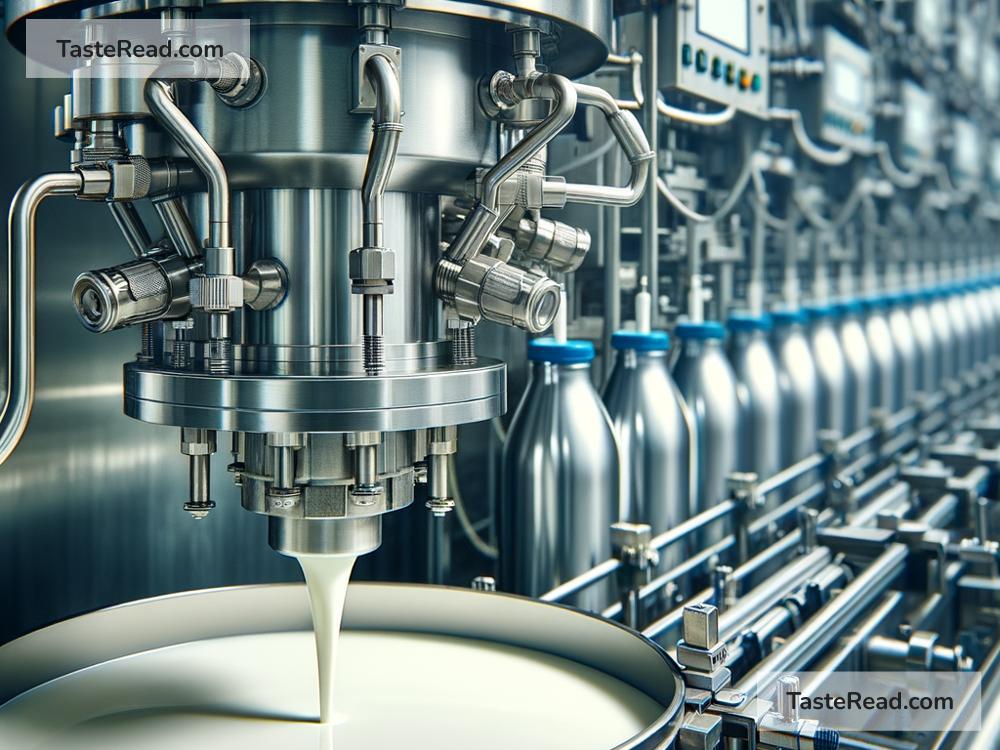The Science of Dairy: Pasteurization and Homogenization Explained
Milk is one of the most common and versatile foods. From a comforting glass of fresh milk to cheese, yogurt, and ice cream, dairy products are part of many people’s daily lives. But have you ever wondered what happens to milk before it reaches your fridge? Two main processes, pasteurization and homogenization, play a vital role in making milk safe and enjoyable for us. Let’s break down the science behind these processes in simple terms.
What is Pasteurization?
Pasteurization is the process of heating milk to kill harmful bacteria without changing its taste or nutritional value. It’s named after Louis Pasteur, a French scientist who discovered this method in the 19th century. Pasteurization is crucial because raw milk, straight from the cow, can carry bacteria like Salmonella, E. coli, and Listeria, which can cause severe illness.
The way pasteurization works is pretty straightforward. Milk is heated to a specific temperature for a specific amount of time. There are different methods of pasteurization, but the two most common ones are:
-
High-Temperature Short-Time (HTST): This method heats milk to around 161°F (72°C) for 15 seconds. It’s fast and efficient, and most milk we buy at grocery stores is pasteurized this way.
-
Ultra-High Temperature (UHT): This heats milk to about 275°F (135°C) for 2-4 seconds. This process keeps milk safe and shelf-stable for months without refrigeration, as long as it stays sealed in its packaging.
Pasteurization doesn’t sterilize milk; it doesn’t kill all bacteria, just the harmful ones. That’s why pasteurized milk still needs to be refrigerated to stay fresh.
Why Is Pasteurization Important?
Without pasteurization, drinking milk could be risky. Before it was invented, many people got sick from diseases spread through raw milk. In fact, pasteurization has been one of the most successful public health advances, reducing diseases like tuberculosis and scarlet fever, which were once linked to milk.
Pasteurization doesn’t just make milk safer—it also extends its shelf life by slowing down the growth of bacteria. This means we can enjoy fresh milk for longer.
What is Homogenization?
Have you ever seen raw milk and noticed the cream floating on top? That’s because milk naturally separates into layers. The fat in milk, called cream, is lighter than the liquid portion, so it rises to the top. Homogenization is the process that mixes the cream evenly throughout the milk, so it doesn’t separate.
Homogenization doesn’t affect milk’s safety. It’s done mainly to improve texture and appearance, making milk smooth and consistent. Most of the milk we drink today has been homogenized, so we don’t see the cream-on-top layer anymore.
The process of homogenization involves forcing milk through very small openings at high pressure. This breaks down the fat into tiny droplets that stay suspended in the liquid. The result is milk that looks uniform and doesn’t separate, even after sitting for a while.
Why Is Homogenization Done?
Homogenization makes milk more appealing to drink and easier to use in cooking. Imagine opening a carton of milk to find half of it is cream and the other half is watery milk—it wouldn’t be practical. By homogenizing milk, we get a consistent texture that’s the same with every sip.
Some people argue that homogenization may affect how milk is digested. However, research hasn’t found strong evidence that homogenized milk is better or worse for your health than non-homogenized milk.
Benefits of Pasteurization and Homogenization
Together, pasteurization and homogenization make milk safer, tastier, and longer-lasting. Here are some benefits of these processes:
-
Safety: Pasteurization reduces the chances of getting sick from harmful bacteria. This is especially important for children, elderly people, and those with weakened immune systems.
-
Consistency: Homogenized milk is smooth and doesn’t require shaking or stirring, making it easier to use in recipes or enjoy on its own.
-
Longevity: Pasteurization increases the shelf life of milk, while homogenization helps maintain its quality over time.
-
Convenience: By combining these processes, milk is easy to store, transport, and consume—all without compromising taste.
A Few Myths About Dairy Science
Some people wonder if these processes reduce milk’s nutritional value. Fortunately, pasteurization and homogenization don’t significantly affect the vitamins and minerals in milk. Calcium, protein, and other nutrients stay intact after processing.
Others worry that pasteurization destroys beneficial enzymes or bacteria. While it’s true that heating milk kills the bacteria, raw milk can carry harmful ones too. To enjoy the health benefits of dairy without the risks, pasteurized milk is the safer option.
Conclusion
Pasteurization and homogenization are two simple yet powerful technologies that have changed the way we consume milk and other dairy products. Pasteurization makes milk safer by removing harmful bacteria, while homogenization improves its texture and ensures it stays consistent. Together, these processes make milk a trusted and enjoyable part of our diet.
Next time you pour yourself a glass of milk, take a moment to appreciate the science behind it. Thanks to these processes, you can enjoy every sip with peace of mind. Whether it’s for your morning coffee, your favorite recipe, or a refreshing treat, processed milk is a perfect blend of safety, taste, and quality that we often take for granted!


